"Filmed by John C. Jay, Jr., ACL, of Williams College, Skis Over Skoki was shown recently at the Eleventh Annual Show of Amateur Motion Pictures, sponsored by Duncan MacD. Little, ACL. Mr. Jay's film, which is 400 feet of 16mm. Kodachrome, accompanied by sound on disc, was made for the Canadian Pacific Railway and will be shown by them to major ski clubs throughout the country. The film outlines a short story of a girl who, having grown bored with the usual mountain trails, leaves her guide during one of the downhill runs and starts over treacherous territory alone. How she ends her journey and what happens en route are shown by Mr. Jay in some of his finest pictures of skiing, a field in which he is an expert. He has made several films of skiing in the past" Movie Makers, June, 1940, 279.
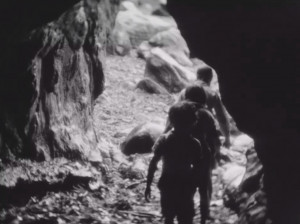
"The film-maker's three children - John, Mary and Anne Arundel, in a story of seaside treasure-hunting, with the familiar plot devices of an old map, inn, sea cave and rising water threatening to cut off escape" (EAFA Database).
"Not content with the typical family holiday bucket and spade film, Herbert Arundel from Longsdon in Staffordshire recorded his three children in a tense drama during a pre-war holiday in Cornwall. Its youthful protagonists and smugglers' treasure plot pre-dates the Famous Five by a good few years and culminates in a splendidly tense finale. Will the Arundel children return from the adventure victorious or will the evil local put a stop to their ways?" (BFI Player)
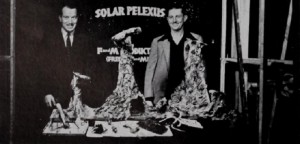
"Mel Weslander and Harry French of San Francisco, with 'Solar Pelexus,' were winners of Agfa's contribution of six rolls of film. As the misspelling of the title indicates, the subject was a farce portraying the journey of two men to another planet in a rocket." American Cinematographer, Jan. 1938, 28.
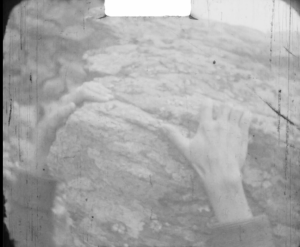
Fiction film that can be inscribed in the tradition of the “mountain films” that were relatively popular at the time in Europe. It is one of the best filmed fiction films of the amateur movement, with interesting camera movements.
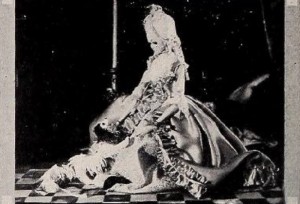
"In Traum Im Karneval, 1000 ft., 35mm., a distinctly new technique in cine puppet drama has been beautifully and conclusively demonstrated. Working with puppets free of distracting threads and controlled entirely from below the line of camera sight, Dr. Goldschmidt has brought to his film the fluidity and cinematic smoothness essential to a genuine photoplay. Gone are the proscenium arch and the unavoidably static feeling of photographed "theatre." Here the camera has moved freely from near shot to closeup or semicloseup as the action demands. Inserted scenes from real life, used with symbolism significant to the mood of the story, have served only to heighten the cinematic illusion, while the unusually graceful miming of the puppets amazes one with a feeling of uncanny and fantastic life. Traum Im Karneval is delicately conceived, sensitively directed and superbly photographed. Of brilliance equal to Dr. Goldschmidt's technique was the unfailing mastery of his collaborator, Richard Teschner, eminent European puppeteer." Movie Makers, Dec. 1931, 685.
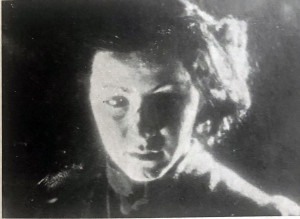
"a sogg. lungh. norm."/feature-length feature film
“Uno della Montagna è l’esaltazione della lotta dell’uomo contro la natura. La montagna (è questa la leggenda) colpisce con la morte tutti quelli che tentano conquistarla. A valle gli uomini e gli animali vivono nella più catastrofica miseria, mentre al di là della sommità vi è un “Alpe” intatto: è necessario trovarne il valico. Esso offrirà alle popolazioni affamate nuove e più fertili,. Due giovani animosi, attraverso non poche peripezie, tentano l’impresa ed uno di essi, più coraggioso e più generoso dell’altro, che abbandona il compagno in un momneto difficile, porta a termina la scalata fra l’esultanza dei valligiani. La vicenda è animata da una delicata storia d’amore.”
“One of the Mountain is the exaltation of the struggle of man against nature. The mountain (this is the legend) punish by death all those who attempt to conquer it. In the valley, men and animals live in the most catastrophic misery, while beyond the summit there is an intact “Refuge”: it is necessary to find the pass. It will offer new and more fertile land to the starving populations. Two courageous young men, through many vicissitudes, attempt the enterprise and one of them, more courageous and generous than the other, who abandons his companion in a difficult moment, completes the climb to the exultation of the valley dwellers. The episode is animated by a delicate love story."
—Notizario delle sezioni cinematografiche dei gruppi universitari fascisti a cura del ministero della cultura popolare, September 1938 p. 10
Total Pages: 2